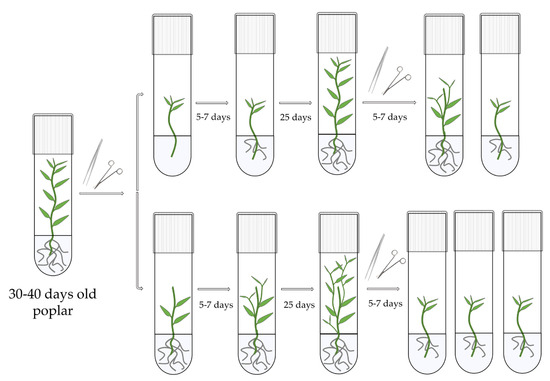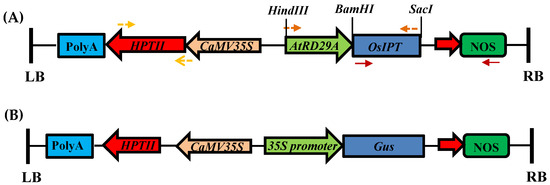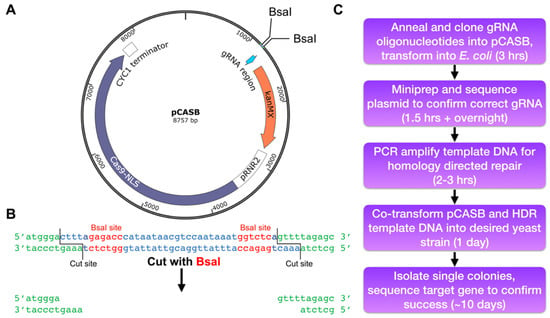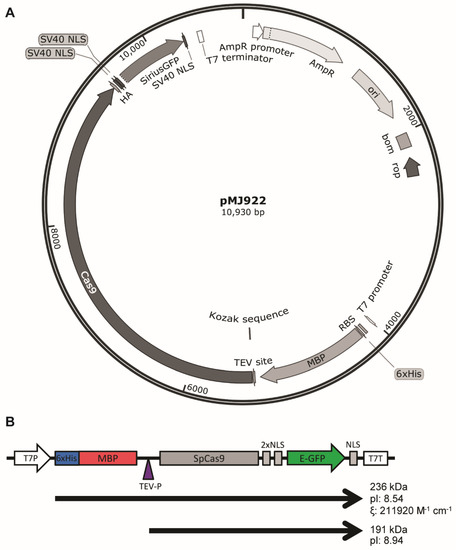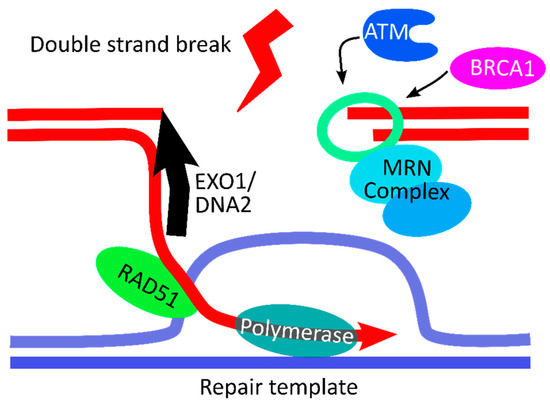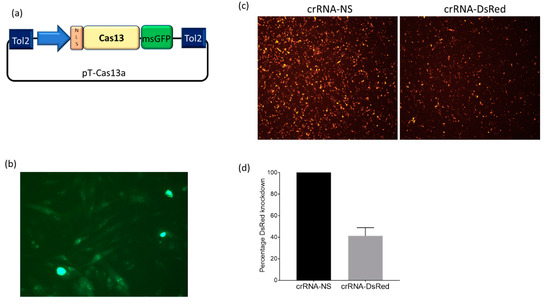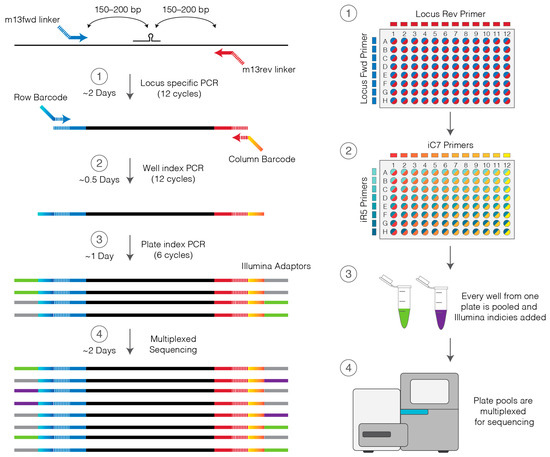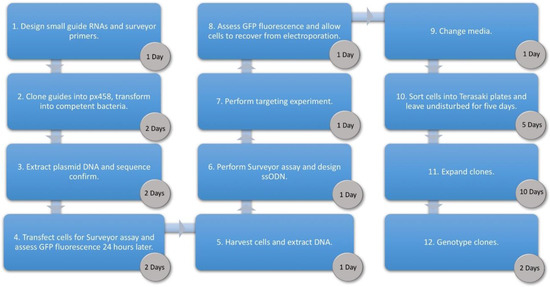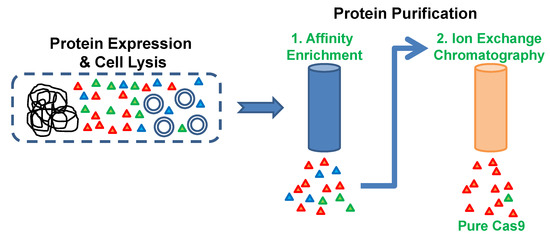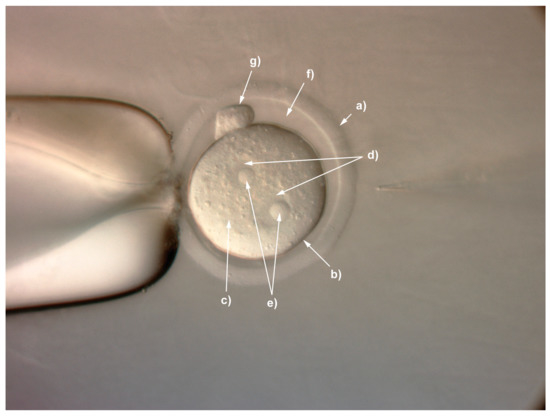Current Advances and Methodologies in Gene Editing
Share This Topical Collection
Editors
 Dr. Philip Hublitz
Dr. Philip Hublitz
 Dr. Philip Hublitz
Dr. Philip Hublitz
E-Mail
Website
Collection Editor
Evotec International GmbH, Marie-Curie-Straße 7, D-37079 Göttingen, Germany
Interests: mouse models; recombineering technology; CRISPR/Cas9 technology; Cas9-screens; dCas9-imaging; general regulation of transcription and epigenesis
Special Issues, Collections and Topics in MDPI journals
 Dr. Antónia Monteiro
Dr. Antónia Monteiro
 Dr. Antónia Monteiro
Dr. Antónia Monteiro
E-Mail
Website
Collection Editor
1. Department of Biological Sciences, National University of Singapore, 14 Science Drive 4, Singapore 117543, Singapore
2. Yale-NUS College, 10 College Avenue West, Singapore 138609, Singapore
Interests: butterfly wing patterns; evo-devo; functional genetics; plasticity; eyespots; evolution; sexual and natural selection; behaviour
Special Issues, Collections and Topics in MDPI journals
Topical Collection Information
Dear colleagues,
With the emergence of CRISPR/Cas9, an unprecedented variety of novel approaches and possibilities for genomic engineering are unveiled on a regular basis. These developments are accelerating the pace of research in model systems, as well as creating a plethora of emerging model systems invaluable for comparative functional approaches across the tree of life. The CRISPR/Cas9 toolbox has already allowed the manipulation of gene function in basal land plants, butterflies, crickets and Atlantic salmon, and many more are sure to follow.
This topical collection on “Gene Editing” aims to provide a forum for discussions on the latest technical developments in the fields of general genome engineering technologies, including (i) the establishment of cell culture systems, and (ii) the development of established and emerging organismal models by CRISPR/Cas9 or similar genome engineering tools. A constant flow of reports demonstrates the continuous refinement of the CRISPR/Cas9 revolutionary tool. Invariably, however, new challenges or missing details in the implementation of this technology become apparent when applied to specific model systems, which need to be addressed. Our topical collection aims to keep up with the most recent developments, refinements, and latest achievements in gene editing available today. We encourage contributions from laboratories working at the forefront of the development of novel CRISPR/Cas9 approaches, with the goal of sharing these details and accelerating the speed of functional genetic discovery across the tree of life, in well-established as well as in emerging model systems.
Dr. Philip Hublitz
Dr. Antónia Monteiro
Collection Editors
Manuscript Submission Information
Manuscripts should be submitted online at www.mdpi.com by registering and logging in to this website. Once you are registered, click here to go to the submission form. Manuscripts can be submitted until the deadline. All submissions that pass pre-check are peer-reviewed. Accepted papers will be published continuously in the journal (as soon as accepted) and will be listed together on the collection website. Research articles, review articles as well as short communications are invited. For planned papers, a title and short abstract (about 100 words) can be sent to the Editorial Office for announcement on this website.
Submitted manuscripts should not have been published previously, nor be under consideration for publication elsewhere (except conference proceedings papers). All manuscripts are thoroughly refereed through a single-blind peer-review process. A guide for authors and other relevant information for submission of manuscripts is available on the Instructions for Authors page. Methods and Protocols is an international peer-reviewed open access semimonthly journal published by MDPI.
Please visit the Instructions for Authors page before submitting a manuscript.
The Article Processing Charge (APC) for publication in this open access journal is 1800 CHF (Swiss Francs).
Submitted papers should be well formatted and use good English. Authors may use MDPI's
English editing service prior to publication or during author revisions.
Keywords
- CRISPR/Cas9
- Genome engineering
- Gene editing
- Established and emerging model systems
- Model generation
- Functional genetics using KI and KO
- Spatiotemporal regulation
- Arrayed and pooled sgRNA-Screening
- Cas9 efficiency and fidelity
- New tools in the CRISPR/Cas9 toolbox
Published Papers (12 papers)
Open AccessArticle
Simplified Method for Agrobacterium-Mediated Genetic Transformation of Populus x berolinensis K. Koch
by
Vasiliy V. Pavlichenko and Marina V. Protopopova
Cited by 1 | Viewed by 2424
Abstract
The rapid advancement of genetic technologies has made it possible to modify various plants through both genetic transformation and gene editing techniques. Poplar, with its rapid
in vitro growth and regeneration enabling high rates of micropropagation, has emerged as a model system for
[...] Read more.
The rapid advancement of genetic technologies has made it possible to modify various plants through both genetic transformation and gene editing techniques. Poplar, with its rapid
in vitro growth and regeneration enabling high rates of micropropagation, has emerged as a model system for the genetic transformation of woody plants. In this study,
Populus × berolinensis K. Koch. (Berlin poplar) was chosen as the model organism due to its narrow leaves and spindle-shaped crown, which make it highly suitable for
in vitro manipulations. Various protocols for the
Agrobacterium-mediated transformation of poplar species have been developed to date. However, the genetic transformation procedures are often constrained by the complexity of the nutrient media used for plant regeneration and growth, which could potentially be simplified. Our study presents a cheaper, simplified, and relatively fast protocol for the
Agrobacterium-mediated transformation of Berlin poplar. The protocol involved using internode sections without axillary buds as explants, which were co-cultivated in 10 µL droplets of bacterial suspension directly on the surface of a solid agar-based medium without rinsing and sterile paper drying after inoculation. We used only one regeneration Murashige and Skoogbased medium supplemented with BA (0.2 mg·L
−1), TDZ (0.02 mg·L
−1), and NAA (0.01 mg·L
−1). Acetosyringone was not used as an induction agent for
vir genes during the genetic transformation. Applying our protocol and using the binary plasmid pBI121 carrying the
nptII selective and
uidA reporter genes, we obtained the six transgenic lines of poplar. Transgenesis was confirmed through a PCR-based screening of kanamycin-selected regenerants for the presence of both mentioned genes, Sanger sequencing, and tests for detecting the maintained activity of both genes. The transformation efficiency, considering the 100 explants taken originally, was 6%.
Full article
►▼
Show Figures
Open AccessProtocol
A Versatile Protocol for Efficient Transformation and Regeneration in Mega Indica Rice Cultivar MTU1010: Optimization through Hormonal Variables
by
Pragya Yadav, V. V. Santosh Kumar, Jyoti Priya, Shashank Kumar Yadav, Shivani Nagar, Meenu Singh and Viswanathan Chinnusamy
Cited by 1 | Viewed by 3526
Abstract
Rice is one of the apex food crops in terms of meeting the daily calorific and dietary requirement of the majority of the world population. However, rice productivity is severely limited by various biotic and abiotic attributes, causing a severe threat to global
[...] Read more.
Rice is one of the apex food crops in terms of meeting the daily calorific and dietary requirement of the majority of the world population. However, rice productivity is severely limited by various biotic and abiotic attributes, causing a severe threat to global food security. In the use of functional genomics and genome editing for the generation of trait-enhanced genotypes, it is necessary to have an efficient genetic transformation and regeneration protocol. The recalcitrant nature and paucity of efficient and versatile genetic transformation and regeneration protocols for
indica cultivars remains a constraint. In the present study, we have optimized a tissue culture method for MTU1010, a mega
indica rice variety. We conducted a combinatorial analysis of different plant growth regulators on embryogenic callus induction efficiency, and it was observed that MSB5 medium supplemented with 2.5 mg/L 2-4D and 0.25 mg/L 6-BAP results in maximum embryogenic callus induction, i.e., 92%. The regeneration efficiency of a transformed callus can be enhanced by up to 50% with the supplementation of 1 mg/L kinetin alongside 2.5 mg/L BAP and 0.5 mg/L NAA in the shooting medium. Furthermore, our results unveiled that the pre-activation of
Agrobacterium culture for 30 min with 150 µM acetosyringone significantly increased the transformation efficiency of calli. Additionally, descaling the salt concentration to half strength in resuspension and co-cultivation increased the efficiency of transformation up to 33%. Thus, the protocol developed in this study will be instrumental for the genome editing and genetic engineering of
indica rice cultivars for functional genomics studies and crop improvement.
Full article
►▼
Show Figures
Open AccessArticle
Acceleration of CRISPR/Cas9-Mediated Editing at Multiple Sites in the Saccharomyces cerevisiae Genome
by
Alexey D. Karpukhin, Fanis A. Sabirzyanov and Vsevolod A. Serebrianyi
Viewed by 2614
Abstract
The application of the CRISPR/Cas9-based genome editing technique to the yeast
Saccharomyces cerevisiae has made it possible to simultaneously modify several sites, particularly to integrate several expression cassettes. The existing methods provide high efficiency for such modifications; however, common protocols include several preparatory
[...] Read more.
The application of the CRISPR/Cas9-based genome editing technique to the yeast
Saccharomyces cerevisiae has made it possible to simultaneously modify several sites, particularly to integrate several expression cassettes. The existing methods provide high efficiency for such modifications; however, common protocols include several preparatory steps, namely, the construction of an intermediate Cas9-expressing strain, the assembly of a plasmid bearing several single guide RNA (sgRNA) expression cassettes, and the surrounding integrated DNA fragments with long flanks for recombination with target loci. Since these preparatory steps are time consuming and may not be desirable in some types of experiments, we explored the possibility of multiple integration without these steps. We have demonstrated that it is possible to skip them simultaneously and integrate up to three expression cassettes into separate sites by transforming the recipient strain with the Cas9 expression plasmid, three differently marked sgRNA plasmids, and three donor DNAs flanked with short (70 bp) arms for recombination. This finding increases the flexibility of choosing the optimal experimental design for multiple editing of the genome of
S. cerevisiae and can significantly accelerate such experiments.
Full article
►▼
Show Figures
Open AccessProtocol
A Simple, Improved Method for Scarless Genome Editing of Budding Yeast Using CRISPR-Cas9
by
Rhiannon R. Aguilar, Zih-Jie Shen and Jessica K. Tyler
Cited by 2 | Viewed by 3704
Abstract
Until recently, the favored method for making directed modifications to the budding yeast genome involved the introduction of a DNA template carrying the desired genetic changes along with a selectable marker, flanked by homology arms. This approach both limited the ability to make
[...] Read more.
Until recently, the favored method for making directed modifications to the budding yeast genome involved the introduction of a DNA template carrying the desired genetic changes along with a selectable marker, flanked by homology arms. This approach both limited the ability to make changes within genes due to disruption by the introduced selectable marker and prevented the use of that selectable marker for subsequent genomic manipulations. Following the discovery of CRISPR-Cas9-mediated genome editing, protocols were developed for modifying any DNA region of interest in a similar single transformation step without the need for a permanent selectable marker. This approach involves the generation of a DNA double-strand break (DSB) at the desired genomic location by the Cas9 nuclease, expressed on a plasmid which also expresses the guide RNA (gRNA) sequence directing the location of the DSB. The DSB is subsequently repaired via homologous recombination using a PCR-derived DNA repair template. Here, we describe in detail an improved method for incorporation of the gRNA-encoding DNA sequences into the Cas9 expression plasmid. Using Golden Gate cloning, annealed oligonucleotides bearing unique single-strand DNA overhangs are ligated into directional restriction enzyme sites. We describe the use of this CRISPR-Cas9 genome editing protocol to introduce multiple types of directed genetic changes into the yeast genome.
Full article
►▼
Show Figures
Open AccessProtocol
A Robust Expression and Purification Method for Production of SpCas9-GFP-MBP Fusion Protein for In Vitro Applications
by
Andrea Luciana Fleitas, Mario Señorale and Sabina Vidal
Cited by 2 | Viewed by 5198
Abstract
Genome editing using the CRISPR/Cas9 system is one of the trendiest methodologies in the scientific community. Many genome editing approaches require recombinant
Streptococcus pyogenes Cas9 (
SpCas9) at some point during their application, for instance, for in vitro validation of single guide
[...] Read more.
Genome editing using the CRISPR/Cas9 system is one of the trendiest methodologies in the scientific community. Many genome editing approaches require recombinant
Streptococcus pyogenes Cas9 (
SpCas9) at some point during their application, for instance, for in vitro validation of single guide RNAs (SgRNAs) or for the DNA-free editing of genes of interest. Hereby, we provide a simple and detailed expression and purification protocol for
SpCas9 as a protein fused to GFP and MBP. This protocol improves protein yield and simplifies the purification process by overcoming the frequently occurring obstacles such as plasmid loss, inconsistent protein expression levels, or inadequate protein binding to affinity resins. On average, this protocol yields 10 to 30 mg of purified, active, His6−MBP−
SpCas9 NLS−GFP protein. The purity addressed through SDS-PAGE is > 80%.
Full article
►▼
Show Figures
Open AccessArticle
Validation of a Novel Double Control Quantitative Copy Number PCR Method to Quantify Off-Target Transgene Integration after CRISPR-Induced DNA Modification
by
Brit-Maren Michaud Schjeide, Maren Schenke, Bettina Seeger and Gerhard Paul Püschel
Cited by 1 | Viewed by 3015
Abstract
In order to improve a recently established cell-based assay to assess the potency of botulinum neurotoxin, neuroblastoma-derived SiMa cells and induced pluripotent stem-cells (iPSC) were modified to incorporate the coding sequence of a reporter luciferase into a genetic safe harbor utilizing CRISPR/Cas9. A
[...] Read more.
In order to improve a recently established cell-based assay to assess the potency of botulinum neurotoxin, neuroblastoma-derived SiMa cells and induced pluripotent stem-cells (iPSC) were modified to incorporate the coding sequence of a reporter luciferase into a genetic safe harbor utilizing CRISPR/Cas9. A novel method, the double-control quantitative copy number PCR (dc-qcnPCR), was developed to detect off-target integrations of donor DNA. The donor DNA insertion success rate and targeted insertion success rate were analyzed in clones of each cell type. The dc-qcnPCR reliably quantified the copy number in both cell lines. The probability of incorrect donor DNA integration was significantly increased in SiMa cells in comparison to the iPSCs. This can possibly be explained by the lower bundled relative gene expression of a number of double-strand repair genes (
BRCA1,
DNA2,
EXO1,
MCPH1,
MRE11, and
RAD51) in SiMa clones than in iPSC clones. The dc-qcnPCR offers an efficient and cost-effective method to detect off-target CRISPR/Cas9-induced donor DNA integrations.
Full article
►▼
Show Figures
Open AccessTechnical Note
In Vitro Inhibition of Influenza Virus Using CRISPR/Cas13a in Chicken Cells
by
Arjun Challagulla, Karel A. Schat and Timothy J. Doran
Cited by 7 | Viewed by 3970
Abstract
Advances in the field of CRISPR/Cas systems are expanding our ability to modulate cellular genomes and transcriptomes precisely and efficiently. Here, we assessed the Cas13a-mediated targeted disruption of RNA in chicken fibroblast DF1 cells. First, we developed a Tol2 transposon vector carrying the
[...] Read more.
Advances in the field of CRISPR/Cas systems are expanding our ability to modulate cellular genomes and transcriptomes precisely and efficiently. Here, we assessed the Cas13a-mediated targeted disruption of RNA in chicken fibroblast DF1 cells. First, we developed a Tol2 transposon vector carrying the Cas13a-msGFP-NLS (pT-Cas13a) transgene, followed by a stable insertion of the Cas13a transgene into the genome of DF1 cells to generate stable DF1-Cas13a cells. To assess the Cas13a-mediated functional knockdown, DF1-Cas13a cells were transfected with the combination of a plasmid encoding DsRed coding sequence (pDsRed) and DsRed-specific crRNA (crRNA-DsRed) or non-specific crRNA (crRNA-NS). Fluorescence-activated cell sorting (FACS) and a microscopy analysis showed reduced levels of DsRed expression in cells transfected with crRNA-DsRed but not in crRNA-NS, confirming a sequence-specific Cas13a mediated mRNA knockdown. Next, we designed four crRNAs (crRNA-IAV) against the PB1, NP and M genes of influenza A virus (IAV) and cloned in tandem to express from a single vector. DF1-Cas13a cells were transfected with plasmids encoding the crRNA-IAV or crRNA-NS, followed by infection with WSN or PR8 IAV. DF1 cells transfected with crRNA-IAV showed reduced levels of viral titers compared to cells transfected with crRNA-NS. These results demonstrate the potential of Cas13a as an antiviral strategy against highly pathogenic strains of IAV in chickens.
Full article
►▼
Show Figures
Open AccessProtocol
High-Throughput Genotyping of CRISPR/Cas Edited Cells in 96-Well Plates
by
Lea Nussbaum, Jelena M. Telenius, Stephanie Hill, Priscila P. Hirschfeld, Maria C. Suciu, The WIGWAM Consortium, Damien J. Downes and Jim R. Hughes
Cited by 4 | Viewed by 8509
Abstract
The emergence in recent years of DNA editing technologies—Zinc finger nucleases (ZFNs), transcription activator-like effector (TALE) guided nucleases (TALENs), clustered regularly interspaced short palindromic repeats (CRISPR)/Cas family enzymes, and Base-Editors—have greatly increased our ability to generate hundreds of edited cells carrying an array
[...] Read more.
The emergence in recent years of DNA editing technologies—Zinc finger nucleases (ZFNs), transcription activator-like effector (TALE) guided nucleases (TALENs), clustered regularly interspaced short palindromic repeats (CRISPR)/Cas family enzymes, and Base-Editors—have greatly increased our ability to generate hundreds of edited cells carrying an array of alleles, including single-nucleotide substitutions. However, the infrequency of homology-dependent repair (HDR) in generating these substitutions in general requires the screening of large numbers of edited cells to isolate the sequence change of interest. Here we present a high-throughput method for the amplification and barcoding of edited loci in a 96-well plate format. After barcoding, plates are indexed as pools which permits multiplexed sequencing of hundreds of clones simultaneously. This protocol works at high success rate with more than 94% of clones successfully genotyped following analysis.
Full article
►▼
Show Figures
Open AccessProtocol
Robust CRISPR/Cas9 Genome Editing of the HUDEP-2 Erythroid Precursor Line Using Plasmids and Single-Stranded Oligonucleotide Donors
by
Gemma Moir-Meyer, Pak Leng Cheong, Aude-Anais Olijnik, Jill Brown, Samantha Knight, Andrew King, Ryo Kurita, Yukio Nakamura, Richard J. Gibbons, Douglas R. Higgs, Veronica J. Buckle and Christian Babbs
Cited by 19 | Viewed by 10025
Abstract
The study of cellular processes and gene regulation in terminal erythroid development has been greatly facilitated by the generation of an immortalised erythroid cell line derived from Human Umbilical Derived Erythroid Precursors, termed HUDEP-2 cells. The ability to efficiently genome edit HUDEP-2 cells
[...] Read more.
The study of cellular processes and gene regulation in terminal erythroid development has been greatly facilitated by the generation of an immortalised erythroid cell line derived from Human Umbilical Derived Erythroid Precursors, termed HUDEP-2 cells. The ability to efficiently genome edit HUDEP-2 cells and make clonal lines hugely expands their utility as the insertion of clinically relevant mutations allows study of potentially every genetic disease affecting red blood cell development. Additionally, insertion of sequences encoding short protein tags such as Strep, FLAG and Myc permits study of protein behaviour in the normal and disease state. This approach is useful to augment the analysis of patient cells as large cell numbers are obtainable with the additional benefit that the need for specific antibodies may be circumvented. This approach is likely to lead to insights into disease mechanisms and provide reagents to allow drug discovery. HUDEP-2 cells provide a favourable alternative to the existing immortalised erythroleukemia lines as their karyotype is much less abnormal. These cells also provide sufficient material for a broad range of analyses as it is possible to generate in vitro-differentiated erythroblasts in numbers 4–7 fold higher than starting cell numbers within 9–12 days of culture. Here we describe an efficient, robust and reproducible plasmid-based methodology to introduce short (<20 bp) DNA sequences into the genome of HUDEP-2 cells using the clustered regularly interspaced short palindromic repeats (CRISPR)/CRISPR associated protein 9 Cas9 system combined with single-stranded oligodeoxynucleotide (ssODN) donors. This protocol produces genetically modified lines in ~30 days and could also be used to generate knock-out and knock-in mutations.
Full article
►▼
Show Figures
Open AccessProtocol
A Two-Step Method for Obtaining Highly Pure Cas9 Nuclease for Genome Editing, Biophysical, and Structural Studies
by
Nandhakishore Rajagopalan, Sateesh Kagale, Pankaj Bhowmik and Halim Song
Cited by 15 | Viewed by 7912
Abstract
Cas9 is a site-specific RNA-guided endonuclease (RGEN) that can be used for precise genome editing in various cell types from multiple species. Ribonucleoprotein (RNP) complexes, which contains the Cas9 protein in complex with a guide RNA, are sufficient for the precise editing of
[...] Read more.
Cas9 is a site-specific RNA-guided endonuclease (RGEN) that can be used for precise genome editing in various cell types from multiple species. Ribonucleoprotein (RNP) complexes, which contains the Cas9 protein in complex with a guide RNA, are sufficient for the precise editing of genomes in various cells. This DNA-free method is more specific in editing the target sites and there is no integration of foreign DNA into the genome. Also, there are ongoing studies into the interactions of Cas9 protein with modified guide RNAs, as well as structure-activity studies of Cas9 protein and its variants. All these investigations require highly pure Cas9 protein. A single-step metal affinity enrichment yielding impure Cas9 is the most common method of purification described. This is sufficient for many gene editing applications of this protein. However, to obtain Cas9 of higher purity, which might be essential for biophysical characterization, chemical modifications, and structural investigations, laborious multi-step protocols are employed. Here, we describe a two-step Cas9 purification protocol that uses metal affinity enrichment followed by cation exchange chromatography. This simple method can yield a milligram of highly pure Cas9 protein per liter of culture in a single day.
Full article
►▼
Show Figures
Open AccessProtocol
CRISPR-Cas9 Mediated Genome Editing in Bicyclus anynana Butterflies
by
Tirtha Das Banerjee and Antónia Monteiro
Cited by 18 | Viewed by 10615
Abstract
CRISPR-Cas9 is revolutionizing the field of genome editing in non-model organisms. The robustness, ease of use, replicability and affordability of the technology has resulted in its widespread adoption among researchers. The African butterfly
Bicyclus anynana is an emerging model lepidopteran species in the
[...] Read more.
CRISPR-Cas9 is revolutionizing the field of genome editing in non-model organisms. The robustness, ease of use, replicability and affordability of the technology has resulted in its widespread adoption among researchers. The African butterfly
Bicyclus anynana is an emerging model lepidopteran species in the field of evo-devo, with a sequenced genome and amenable to germ line transformation. However, efficient genome editing tools to accelerate the pace of functional genetic research in this species have only recently become available with CRISPR-Cas9 technology. Here, we provide a detailed explanation of the CRISPR-Cas9 protocol we follow in the lab. The technique has been successfully implemented to knock-out genes associated with eyespot development and melanin pigmentation.
Full article
►▼
Show Figures
Open AccessProtocol
Generating CRISPR/Cas9-Derived Mutant Mice by Zygote Cytoplasmic Injection Using an Automatic Microinjector
by
Brendan Doe, Ellen Brown and Katharina Boroviak
Cited by 13 | Viewed by 12442
Abstract
Clustered regularly interspaced short palindromic repeats (CRISPR)/CRISPR-associated (Cas) assisted generation of mutant animals has become the method of choice for the elucidation of gene function in development and disease due to the shortened timelines for generation of a desired mutant, the ease of
[...] Read more.
Clustered regularly interspaced short palindromic repeats (CRISPR)/CRISPR-associated (Cas) assisted generation of mutant animals has become the method of choice for the elucidation of gene function in development and disease due to the shortened timelines for generation of a desired mutant, the ease of producing materials in comparison to other methodologies (such as embryonic stem cells, ESCs) and the ability to simultaneously target multiple genes in one injection session. Here we describe a step by step protocol, from preparation of materials through to injection and validation of a cytoplasmic injection, which can be used to generate CRISPR mutants. This can be accomplished from start of injection to completion within 2–4 h with high survival and developmental rates of injected zygotes and offers significant advantages over pronuclear and other previously described methodologies for microinjection.
Full article
►▼
Show Figures
Planned Papers
The below list represents only planned manuscripts. Some of these
manuscripts have not been received by the Editorial Office yet. Papers
submitted to MDPI journals are subject to peer-review.
Title: Simplified protocol for the purification of native Cas nucleases for DNA-free genome editing
Authors: Margherita D’Amico; Flavia Angela Maria Maggiolini; Lucia Rosaria Forleo; Maria Francesca Cardone; Riccardo Velasco; Teodora Basile; Carlo Bergamini
Affiliation: CREA Council for Agricultural Research and Economics -Research Center for Viticulture and Enology, via Casamassima 148, 70010 Turi, Italy
Abstract: DNA-free genome editing by direct delivery of CRISPR-associated nucleases has emerged as a promising technology due to its precision and reduced risk of off-target effects. However, existing purification protocols for native Cas proteins require the use of complex instrumentation which limits their application. Here, we present a simplified protocol for the purification of native Cas nucleases optimized for DNA-free genome editing. Our approach leverages a streamlined affinity and ion exchange chromatography coupled with minimal downstream processing, ensuring a good yield and activity of the purified proteins. In vitro analysis of purified ribonucleoprotein complex demonstrated a good efficiency of DNA target cleavage. This simplified protocol increases the opportunity to adopt CRISPR technology and enables broader access to DNA-free genome editing tools also for laboratories that are not specifically equipped for protein purification.








